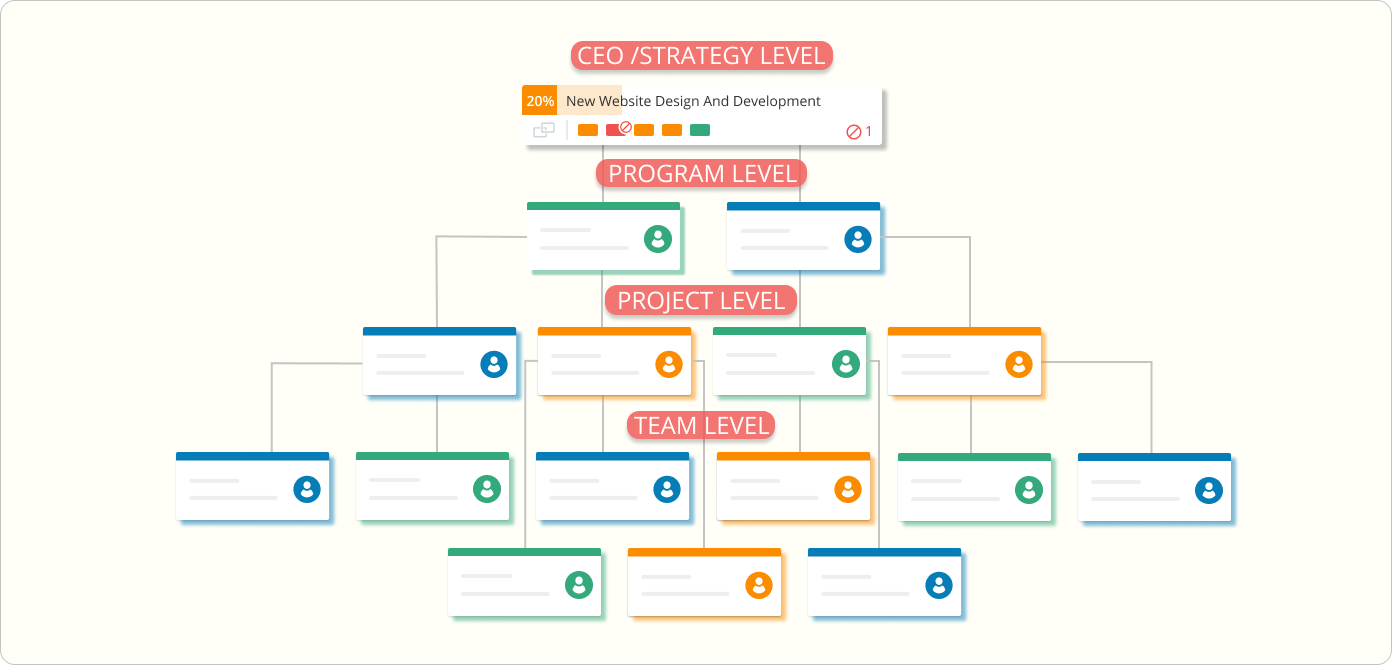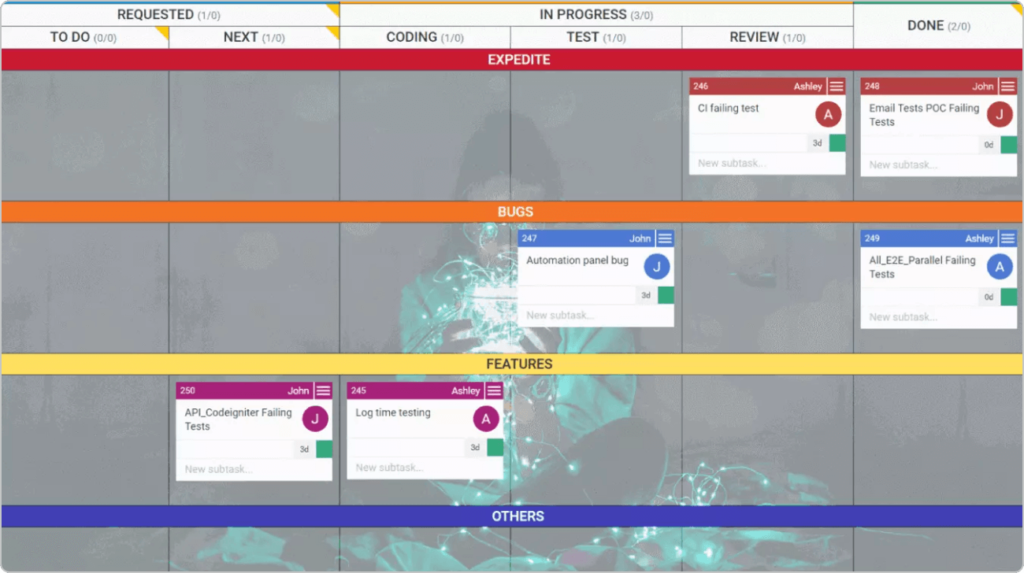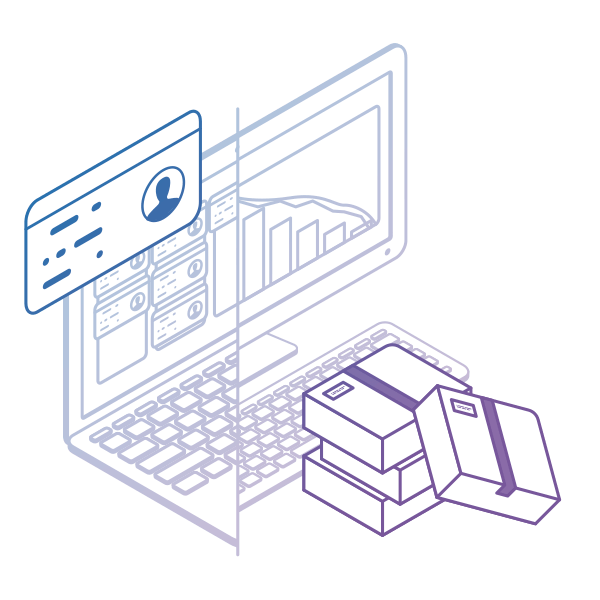Every project demands a systematic workflow and a strategy to transform an idea into reality. In this context, a well-defined project workflow is vital for the success of any project. However, it's not just about having a workflow in place; its efficiency is equally crucial.
But what exactly constitutes an efficient project management workflow? How can one develop such a workflow? What tools and methodologies do professionals employ to craft exceptional and effective workflows?
Keep reading below to find the answers to these and other questions.
What Is a Project Management Workflow?
A project management workflow is a systematic approach to managing and optimizing the flow of tasks, information, and resources throughout a project lifecycle. It involves organizing and coordinating activities to ensure efficiency and effectiveness in achieving project goals.
Workflow Components
Key characteristics of a workflow include:
-
Work Breakdown Structure (WBS): The term "workflow" usually refers to the sequence of tasks and activities within a project. To create a sequence like that, you need first to break down each project into its building parts. In other words, create a project work breakdown structure.
 Work breakdown structure
Work breakdown structure
-
Application: Workflow focuses on the operational aspects of executing the project. It includes details like who does what, in what order, using which tools, and under what conditions. It's primarily focused on task efficiency and smooth transitions.
-
Visualization: Workflows are often graphically represented to illustrate the flow of work or information through the project's stages.
Businessmap is the most flexible software
to align work with company goals
What Are the Benefits of Efficient Project Management Workflows?
An effective project management workflow offers numerous benefits, each contributing to the overall success and efficiency of a project:
-
Faster Delivery: Optimizing your workflows by reducing wasteful activities and removing bottlenecks helps speed up the delivery process.
-
Better Quality Control: Systematic workflow allows for regular quality checks and consistent output.
-
Clear Communication: Establishes clear lines of communication, ensuring everyone is on the same page.
-
Increased Visibility: Offers a transparent view of the project's progress.
-
Effective Risk Management: Helps identify and address potential risks early in the project.
-
Resource Optimization: Ensures optimal use of resources, avoiding wastage and overallocation.
-
Deadline Adherence: Facilitates meeting project deadlines through structured work progression.
-
Flexibility and Adaptability: Allows for easier adjustments to changes and unexpected challenges.
-
Enhanced Collaboration: Encourages teamwork by clearly defining roles and responsibilities.
-
Stakeholder Satisfaction: Increases the likelihood of meeting or exceeding stakeholder expectations.
-
Learning and Improvement Opportunities: Provides insights for future projects through documentation and analysis of the workflow.
-
Cost Reduction: Streamlined project management processes can reduce project costs and improve budget management.
-
Strategic Alignment: Ensures project activities align with the organization's strategic goals.
-
Increased Employee Satisfaction: Clear structure and expectations can lead to higher morale and job satisfaction among team members.
How Is Workflow Management Different from Project Management?
Workflow management and project management are both essential in the realm of organizing and accomplishing tasks, but they differ significantly in terms of their scope, roles, and overall importance.
While workflow management is about optimizing and maintaining efficient operational processes, project management is centered around achieving specific goals through temporary, unique projects. Both are critical in different contexts and contribute significantly to an organization's overall success and efficiency.
| |
Workflow Management |
Project Management |
| Focus |
Workflow management concentrates on optimizing individual business processes or sequences of tasks. It is about the efficient flow of work activities, typically within a set, recurring cycle. |
Project management is concerned with planning, executing, and completing a project, which is a temporary endeavor with a specific start and end date, goal, and unique requirements. |
| Application |
This approach manages ongoing operational processes like invoice approvals, employee onboarding, customer service operations, and work management. |
It applies to one-time, non-repetitive activities, such as constructing a building, developing new software, or launching a marketing campaign. |
| Roles |
Roles in workflow management are often functional or operational, involving process managers, team leaders, and frontline employees who carry out daily tasks. |
Project management involves roles like project managers, team members, stakeholders, and clients. The project manager often acts as a coordinator and leader. |
| Value |
Vital for improving day-to-day operational efficiency, reducing costs, and ensuring consistency in routine tasks. |
Crucial for achieving specific goals, managing complex tasks, and ensuring projects are delivered successfully in scope, time, and on budget. |
| Outcome |
Leads to streamlined processes, better resource utilization, and can significantly enhance overall organizational productivity and employee satisfaction. |
Effective project management results in successful project completion, meeting stakeholder expectations, and contributing to the organization's strategic goals. |
How to Create an Efficient Project Management Workflow in 4 Steps?
Here's a step-by-step guide to help you create an efficient project management workflow:
Step 1: Visualize the Entire Work Process
Begin by visualizing your entire end-to-end work process. This involves creating a visual representation of all the steps in your project from start to finish. Include every stage of the project workflow, along with the process steps where work depends on someone else (waiting stages). This visualization elevates workflow transparency, helping to identify bottlenecks, unnecessary steps, and areas for improvement.
 Visualization of a project management workflow using a kanban board
Visualization of a project management workflow using a kanban board
Step 2: Manage Blocking Issues
With your work process visualized, monitor where work gets delayed, focusing on dependencies or other issues that cause roadblocks. Regularly review the workflow to identify these problem areas. This could involve team meetings to discuss challenges and brainstorm solutions. Implement strategies to eliminate these blocking issues. This could mean reassigning resources, altering deadlines, or changing processes to ensure smoother workflow progression.
 Identifying a workflow bottleneck
Identifying a workflow bottleneck
Step 3: Reduce Multitasking
By focusing on fewer tasks at а time, teams can improve their concentration and efficiency, leading to better quality work and faster delivery times. Incorporate WIP limits into your project management approach. This means setting a cap on the number of tasks or projects that can progress at any given time. Eliminating context-switching can have a positive effect not only on the quality of work but also on stress levels.
 Limiting work in progress of a workflow
Limiting work in progress of a workflow
Step 4: Utilize Automation Techniques
Identify repetitive, time-consuming tasks within your workflow that can be automated. This could include data entry, report generation, or specific communication processes. Implementing project management tools and software that offer automation capabilities can significantly reduce manual effort and minimize the likelihood of human error. Automation speeds up the workflow and allows individuals to focus on more strategic work and high-value tasks that require human insight and creativity.
Businessmap is the most flexible software
to align work with company goals
Tools and Techniques for Effective Project Management Workflow
Creating an effective project management workflow involves integrating various tools, methodologies, and techniques that enhance the efficiency and effectiveness of project execution.
Choosing the Right Project Management Methodologies
Adopting project management methodologies is instrumental in constructing efficient workflows, as they provide structured frameworks to navigate the planning, execution, and completion of projects.
-
Agile methodologies like Scrum and Kanban or traditional approaches like Waterfall offer diverse systems tailored to different project needs, ranging from iterative and flexible processes to more linear and defined sequences.
- Implementing these methodologies enhances clarity in roles, responsibilities, and timelines, facilitating better coordination and communication among team members.
- They encourage regular review and adaptation, allowing teams to respond swiftly to changes and challenges, thereby maintaining project momentum.
- By providing a blueprint for project execution, these methodologies ensure a systematic and consistent approach to managing tasks, resources, and stakeholder expectations, ultimately leading to more predictable outcomes and successful project delivery.
Project Management Software and Applications
Integrating software and applications into project management significantly enhances the efficiency of workflows, revolutionizing how projects are planned, executed, and monitored.
- These tools bring automation to work scheduling, resource allocation, and progress tracking, significantly reducing manual efforts and the likelihood of human error. Indeed, process automation is one of the most deployed automating technologies in organizations today. (Source: McKinsey)
- They facilitate real-time collaboration and communication, ensuring team members stay connected and informed, regardless of location.
- With features like shared calendars, boards, and planning modules, project management software provides a visual overview of the project's status, helping identify bottlenecks and promptly adjust timelines.
Moreover, these applications streamline document management and reporting, making it easier to maintain project documentation and share updates with stakeholders.
Businessmap is the most flexible software
to align work with company goals
In Summary
An effective project management workflow is essential for successfully delivering projects, primarily because it provides clarity and direction, enhances resource efficiency, and improves risk management and quality control. It offers:
- A clear roadmap of the project flow, delineating each task and milestone, ensuring that all team members are aligned and understand their responsibilities.
- A structured approach that optimizes the use of resources, preventing wastage, delays, and cost overruns.
- A way for an early identification and resolution of potential bottlenecks.





 Work breakdown structure
Work breakdown structure Visualization of a project management workflow using a kanban board
Visualization of a project management workflow using a kanban board Identifying a workflow bottleneck
Identifying a workflow bottleneck Limiting work in progress of a workflow
Limiting work in progress of a workflow


